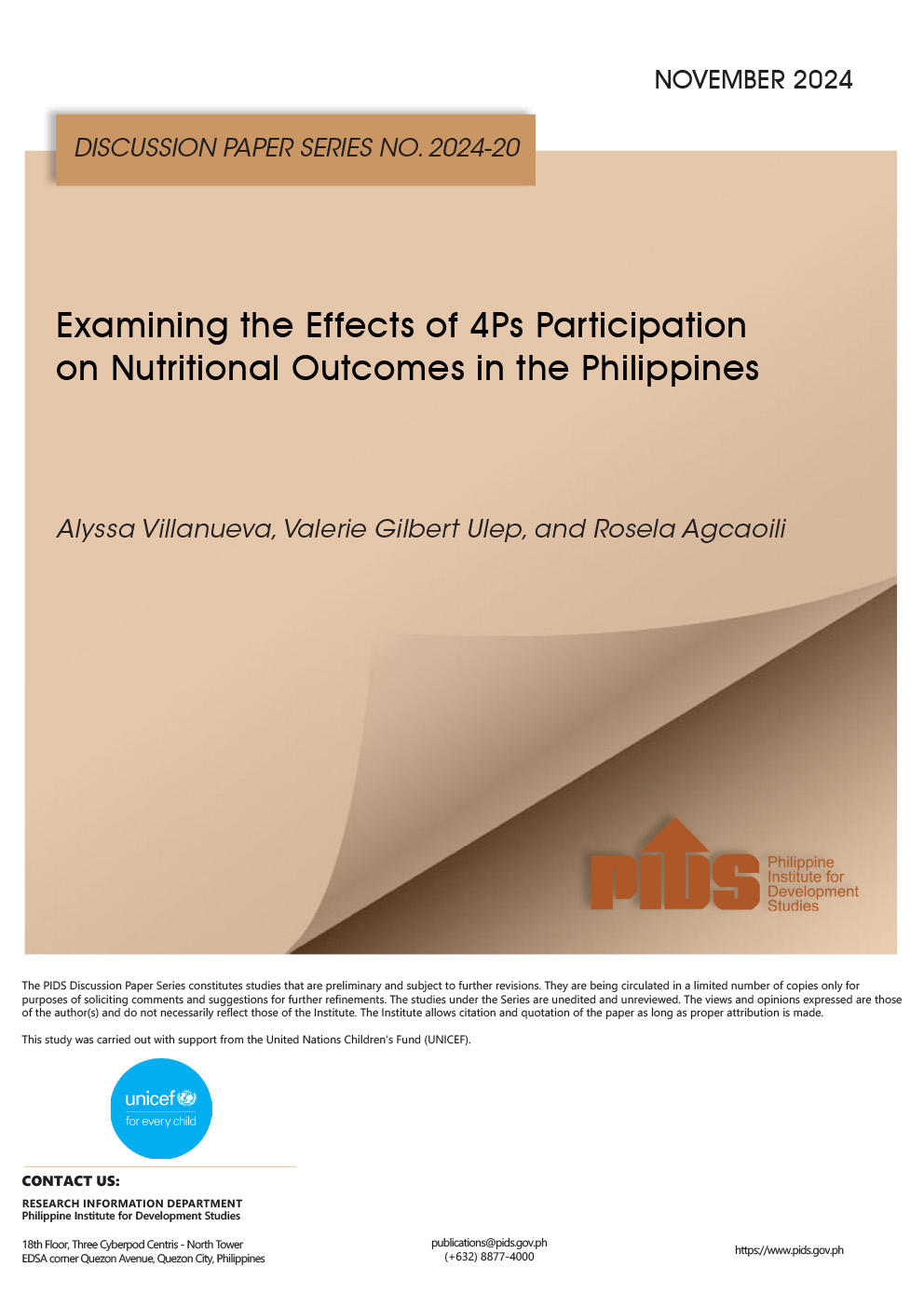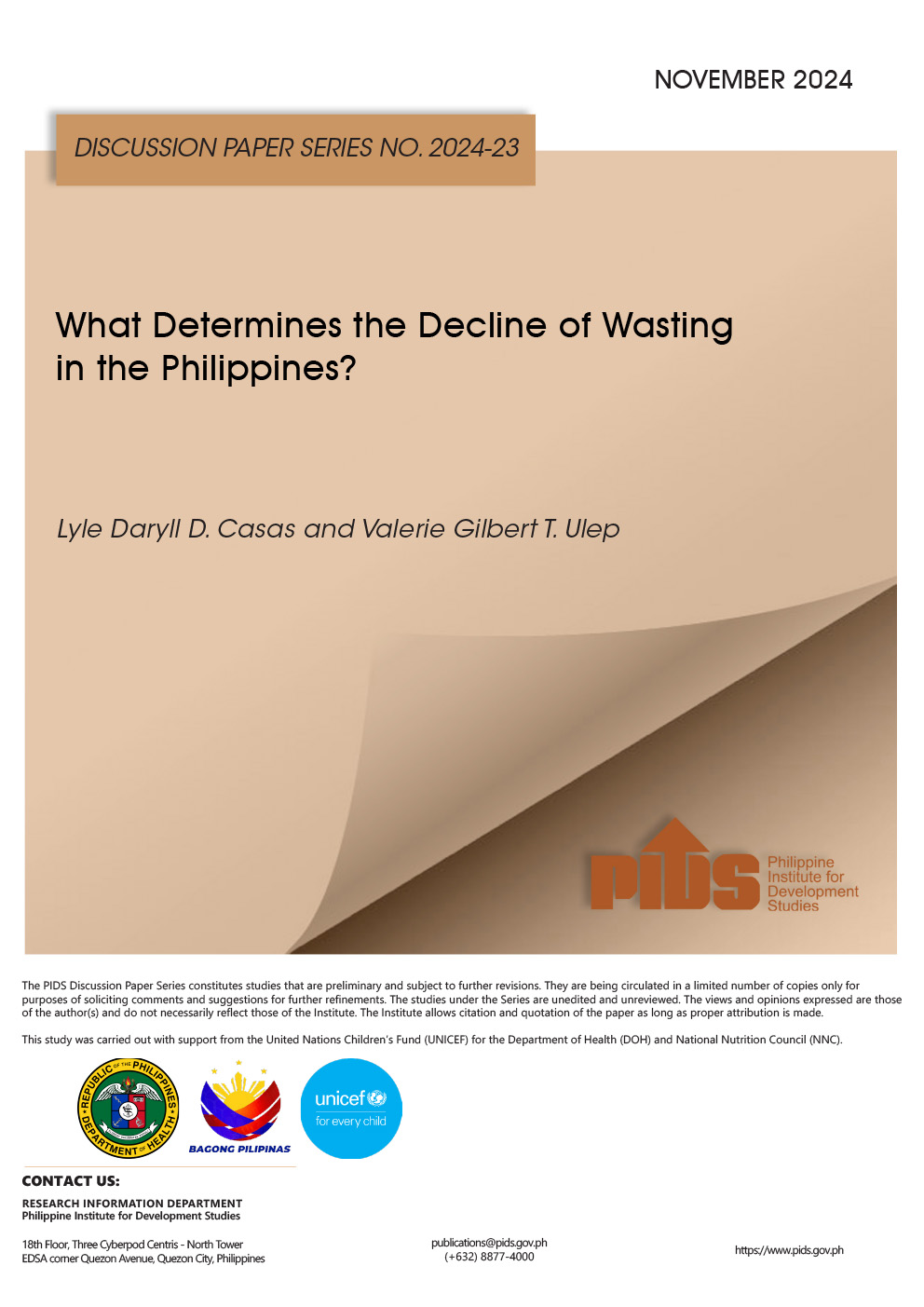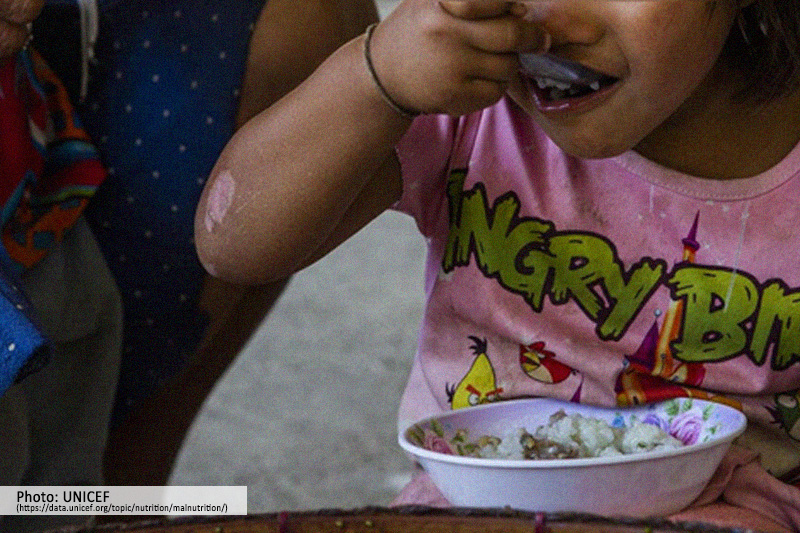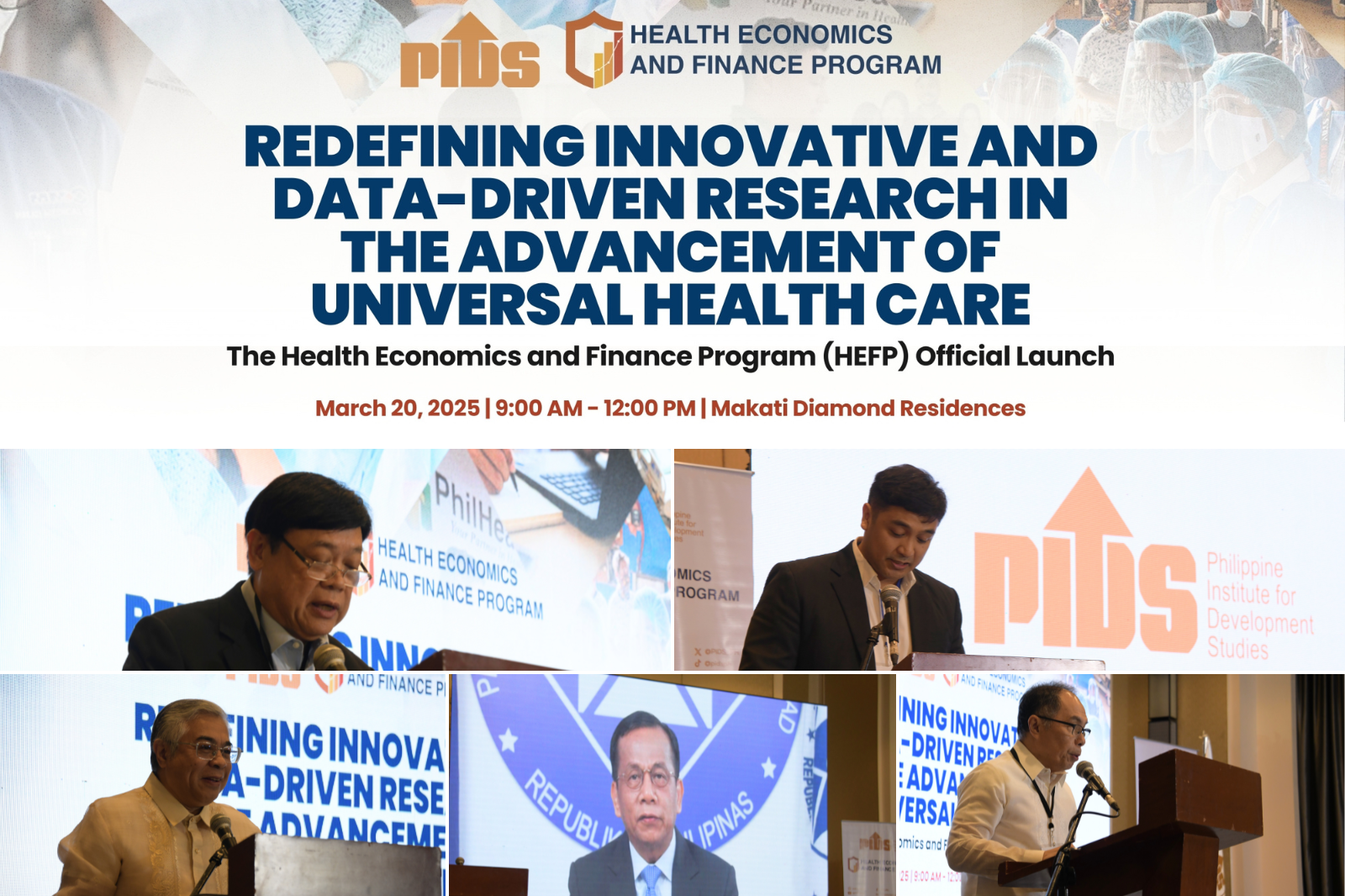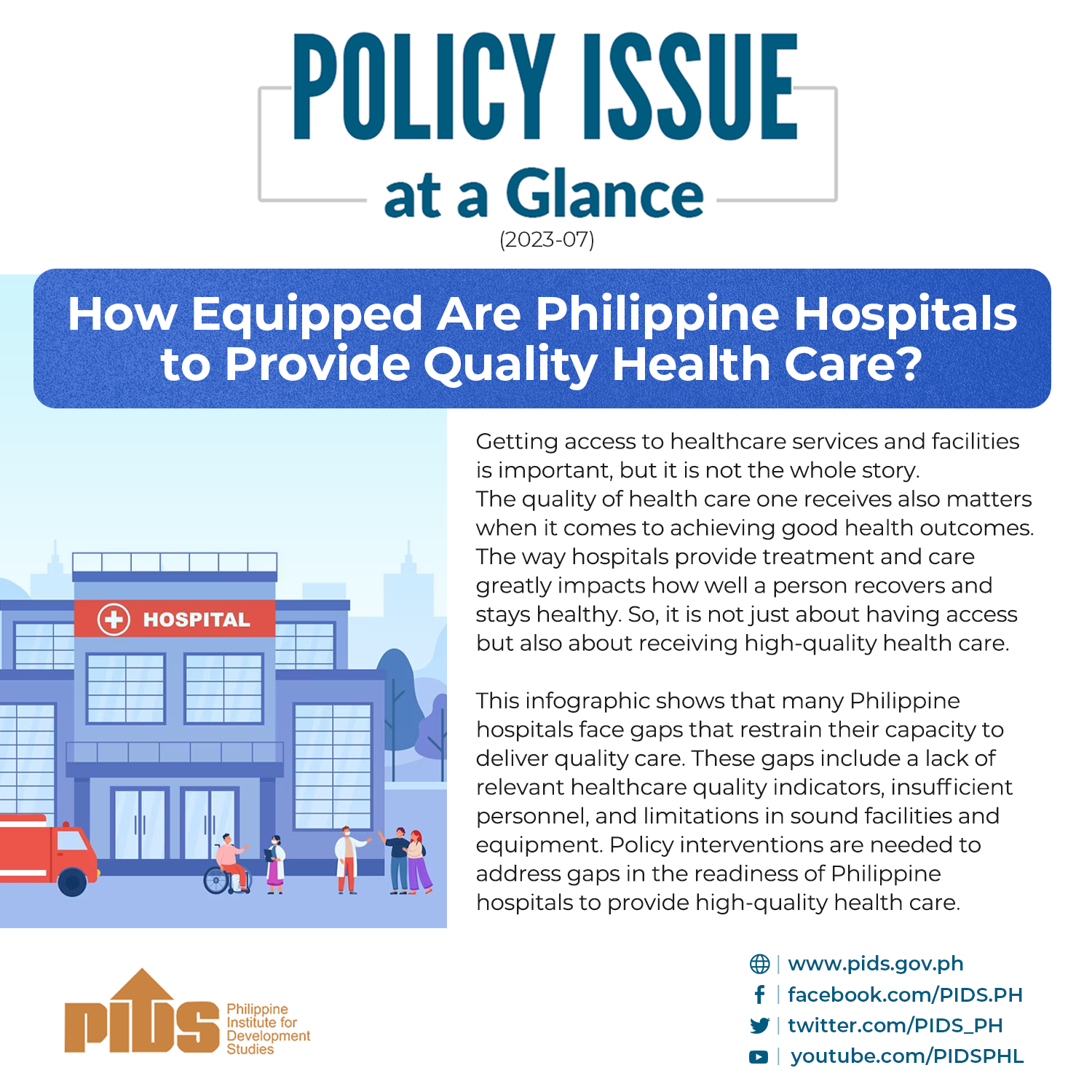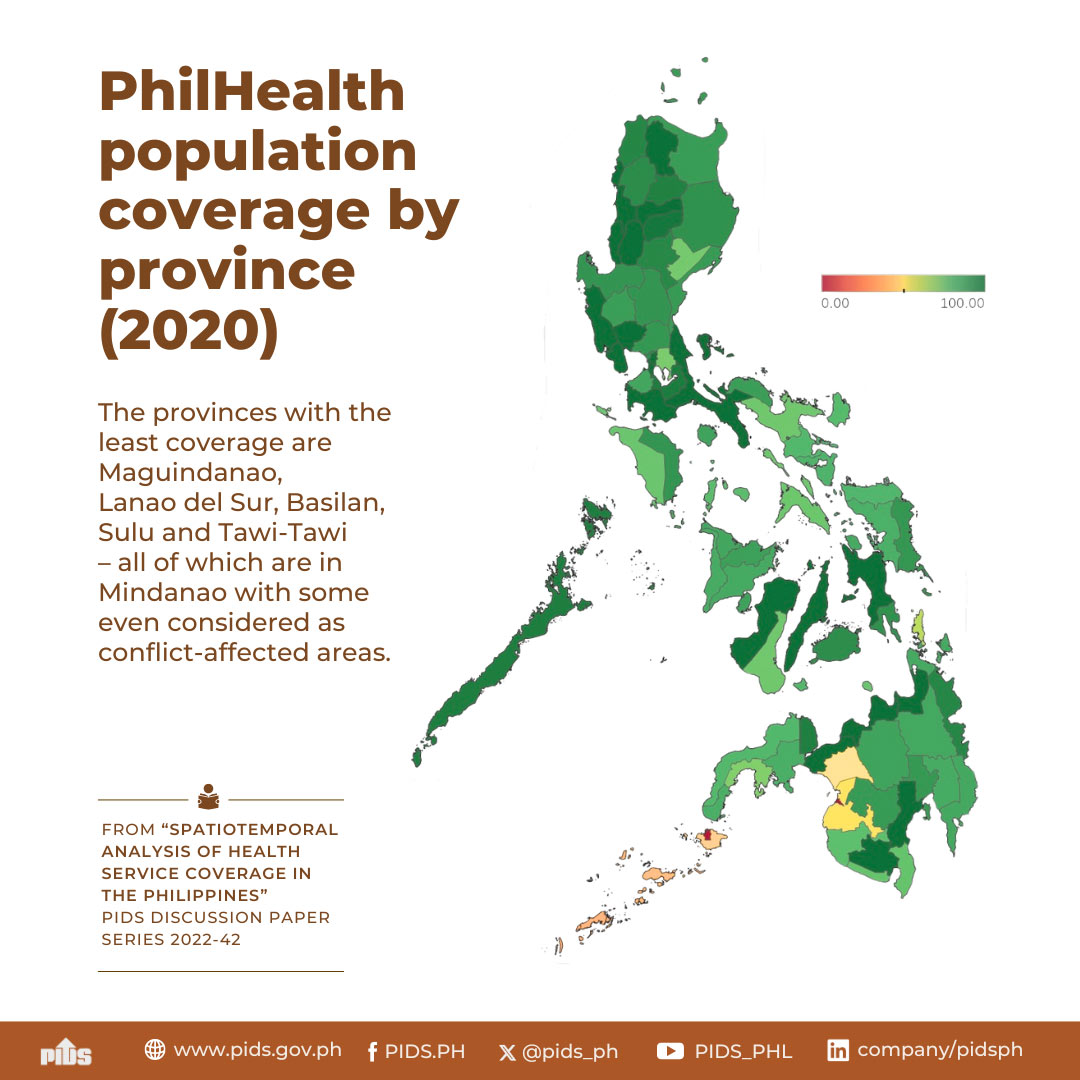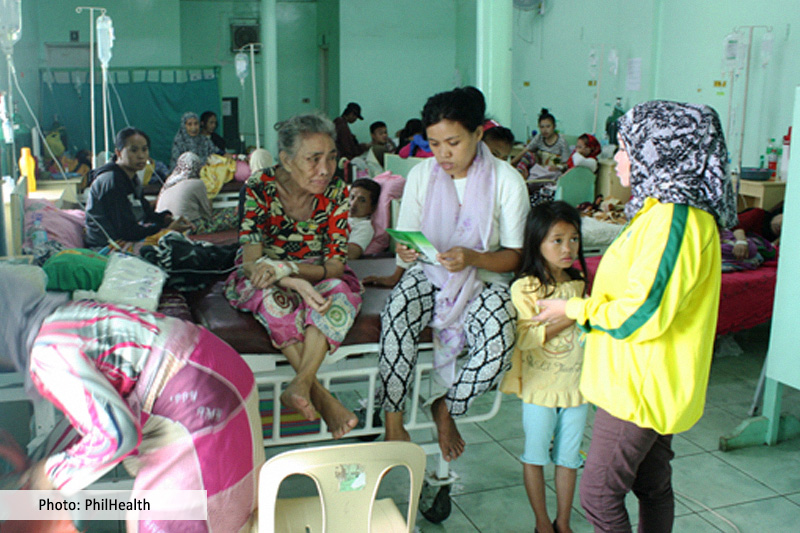
While the country's policies on health service coverage articulate progressive goals, there is a paradox in the policy articulation and the actual performance of the Philippine healthcare system.
This was disclosed by Philippine Institute for Development Studies (PIDS) Senior Research Fellow Valerie Gilbert T. Ulep at a recent webinar conducted by the Institute featuring the study “Spatiotemporal Analysis of Health Service Coverage in the Philippines”. Coauthored with PIDS Supervising Research Specialist Jhanna Uy and research consultants Clarisa Joy Flaminiano, Vicente Alberto Puyat, and Victor Andrew Antonio, the research evaluated the population, facility, and service coverage of the National Health Insurance Program (NHIP) and the financial risk protection for its members and dependents.
“Looking at our health policies, the Philippines is the most progressive among our Asian neighbors. Many articulations of our laws are investments for the poor,” Ulep said.
At the webinar, Ulep revealed that the Philippines is a “microcosm of global health inequalities”. For instance, while the poorest regions like the Autonomous Region in Muslim Mindanao have lower health outcomes than Myanmar, a richer region like Metro Manila has health outcomes similar to emerging economies like Thailand and Malaysia.
“The wide disparity in terms of health outcomes implies a disconnect in the distribution of inputs (i.e., resources, capital investments, equipment),” he noted.
Ulep further expounded this observation by showing that the NHIP’s population coverage was high in most island groups, yet some provinces, notably in Mindanao, only had over a 50-percent coverage.
“These provinces are often considered conflict areas, posing a unique challenge for the Philippine Health Insurance Corporation (PhilHealth). Low registration in these areas underscores the need to intensify targeting efforts to enhance membership registration and healthcare access,” he said.
Ulep explained that the disparity is driven by many factors, including employment, poverty incidence, wage rates, and process inefficiencies in the classification and enrolment of indigents and sponsored members.
Disparities in hospital bed density reveal accessibility issues, particularly in Mindanao, with many provinces having less than one bed per 1,000 population.
Inequitable health service access is also seen across locations and hospital characteristics. Privately owned Level 2 and 3 hospitals have higher bed densities than government-owned hospitals of the same level. Hospitals in Metro Manila and the Visayas generally have higher bed densities compared to lower bed densities in Luzon and Mindanao.
To address these challenges, Ulep and his coauthors recommended enhancing data management “to ensure the accuracy, validity, and consistency of data on indigents at both the national and subnational levels to improve the equity of health care throughout the country”. They likewise emphasized the need to enhance the coverage and accessibility of primary healthcare to reduce hospital admissions and lower healthcare expenditures. It is also essential, they said, to have a strategic shift in PhilHealth’s service purchasing and revenue generation to guarantee sufficient funds for all covered diseases to reduce out-of-pocket health costs.
Watch the webinar at https://www.facebook.com/PIDS.PH/videos/354507193697851 and https://youtu.be/A8M0s221e4U?si=lrAC0R_WAvUk-9n0.
For more videos of PIDS events, go to https://pids.gov.ph/videos. ###


